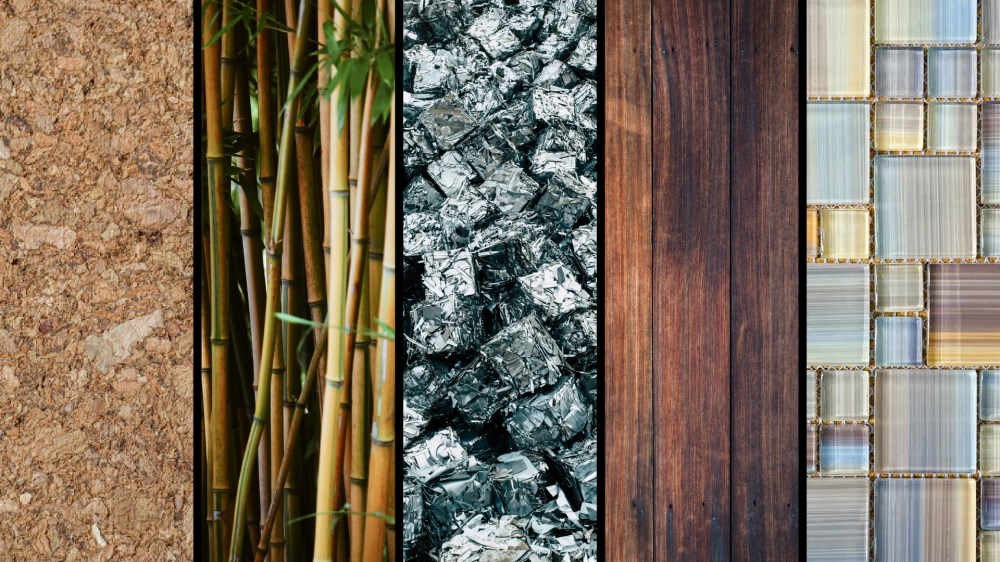In an age where sustainability is a top priority in designing the built environment, specifying the right materials can be both challenging and confusing. After all, what actually qualifies as a sustainable material? The reality is that sustainability can be measured both subjectively and objectively by a variety of factors.
In an effort to bring some clarity to the topic, we’ve identified five of the world's most sustainable materials for interior design as measured by an embodied carbon score, a local material score, and a recyclability score.
Sustainable Material #1: Bamboo

Photo courtesy of: The Green Village
First on our list of sustainable materials for interior design is bamboo: a fast-growing, tree-like grass.
The rigidity of bamboo makes it well-suited for use in flooring, wall panels, cabinetry, furniture, and decorative elements. The natural warmth of bamboo adds an organic touch to modern, minimalist, and eco-friendly designs.
Bamboo grows rapidly (often between 1 and 3 feet per day), requires minimal water, and does not need pesticides or fertilizers, making it a highly sustainable material. It regenerates after harvesting without the need for replanting and even provides carbon sequestration benefits by helping reduce atmospheric CO₂ levels.
Embodied Energy Score: 8/10
Bamboo has a low embodied energy of approximately 0.5 to 1.1 MJ/kg, meaning it requires less energy to produce compared to materials like steel or concrete.
Local Material Score: 3/10
In regions where bamboo grows naturally (like Southeast Asia or South America), it can have a high Local Material Score. However, in regions like North America or Western Europe, it requires long-distance transportation, resulting in high shipping costs and a high output of carbon emissions.
Recycle Score: 6/10
Untreated bamboo can be composted or reused, making it highly recyclable. Processed bamboo (e.g., with adhesives or finishes) can be more difficult to recycle, reducing its score slightly. However, it still has strong reuse potential.
Sustainable Material #2: Recycled Metal
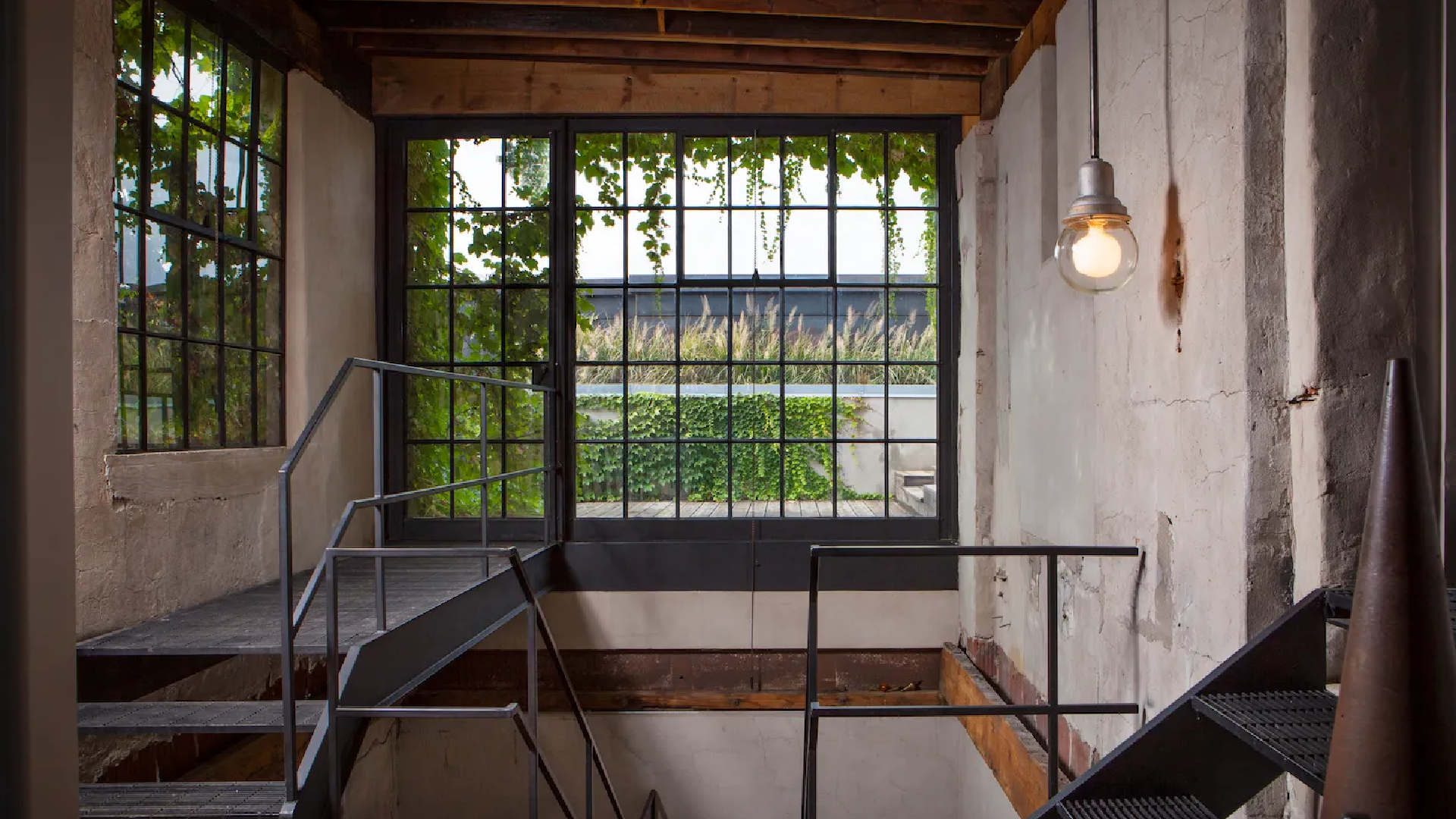
Photo courtesy of: ArchitecturalDigest
Next on the list of sustainable materials is recycled metal: a versatile material derived from scrap metal that has been melted down and reformed into new products.
Designers and architects often use recycled metal to create furniture, lighting fixtures, wall panels, countertops, and other structural elements. Combinations of metals like aluminum, steel, and copper often contribute to modern, industrial, or minimalist interiors.
The energy required to recycle metal is significantly less than what is required to produce new metal from raw ore. As an example, recycled aluminum uses up to 95% less energy than producing it from raw bauxite ore.
Recycling metal limits the demand for mining, which in turn limits the amount of manpower, oil, fuel, and destruction to the earth required to harvest the raw material. As a bonus, metals can be recycled indefinitely without losing their quality, making them an excellent option for sustainable materials.
Embodied Energy Score: 6/10
Although recycled metal requires far less energy to produce than virgin metal, it still has a relatively high embodied energy compared to natural materials like bamboo or cork. For example, the embodied energy of recycled steel is around 8-12 MJ/kg, and recycled aluminum is about 10-15 MJ/kg.
Local Material Score: 7.5/10
Recycled metal is often sourced locally from scrap metal yards or recycling centers, which reduces transportation needs. However, the score depends on the availability of recycling facilities in your region. Metropolitan areas will likely score higher than rural areas based on the proximity of places like scrap yards and landfills.
Recycle Score: 10/10
Metal is one of the most recyclable materials. It can be recycled nearly indefinitely without degradation in quality, making it a perfect candidate for a circular economy. Both steel and aluminum can be repurposed repeatedly without losing their properties, giving it the highest recycling score.
Sustainable Material #3: Cork
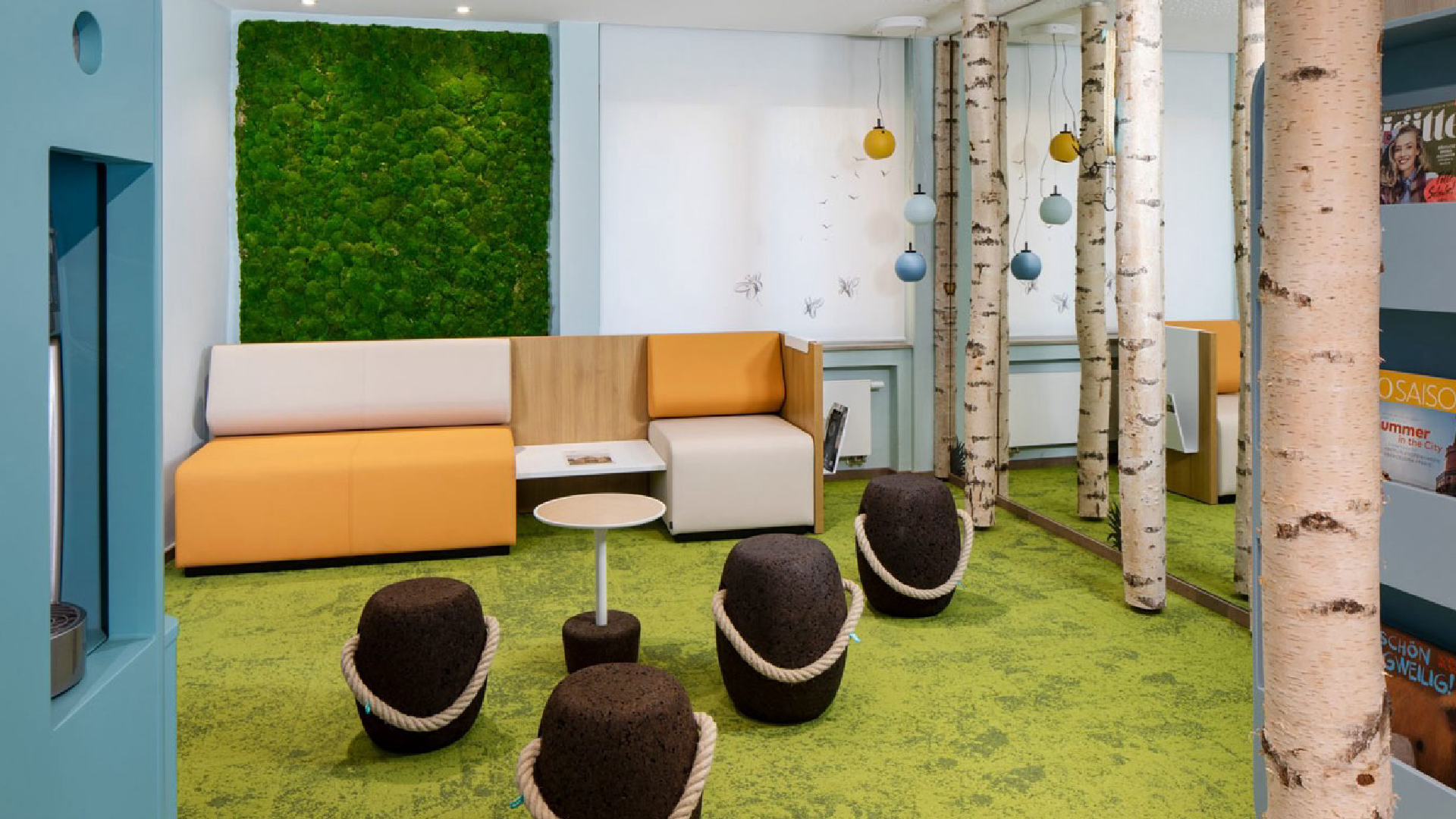
Photo courtesy of: DAM Portugal
Next on the list is cork: a material harvested from the bark of cork oak trees.
Cork is lightweight, flexible, and often has excellent thermal and acoustic insulation properties, making it a suitable material for flooring, wall tiles, acoustic panels, and even furniture.
Manufacturers like PROFLEX use cork in their underlayment flooring solutions for sound control because of cork's natural acoustic insulation properties. Homasote uses cork in their NovaCork tackboard panels for ceiling and wall acoustic insulation.
Cork oak trees' bark regenerates after harvesting without harming the tree, allowing for repeated harvests every 9-12 years. Cork harvesting can actually support ecosystems, particularly in the Mediterranean region, where cork forests prevent desertification and promote biodiversity.
Embodied Energy Score: 7/10
Cork has a relatively low embodied energy, requiring about 1.0-2.0 MJ/kg for processing. However, this score can vary based on your location. While the energy needed to extract and process cork is minimal compared to many building materials, some processing and transportation still contribute to the score.
Local Material Score: 5/10
Cork is native to the Mediterranean region (Portugal, Spain, etc.). In these areas, it scores higher as a local material. However, for regions outside of Europe, cork often needs to be imported, which lowers its score due to transportation-related carbon emissions.
Recycle Score: 8/10
Cork is biodegradable, compostable, and can be recycled into products like flooring, wall tiles, or insulation. Recycled cork can also be upcycled into new cork-based products, though the reuse potential is not as endless as metals, which slightly lowers the score.
Sustainable Material #4: Reclaimed Wood
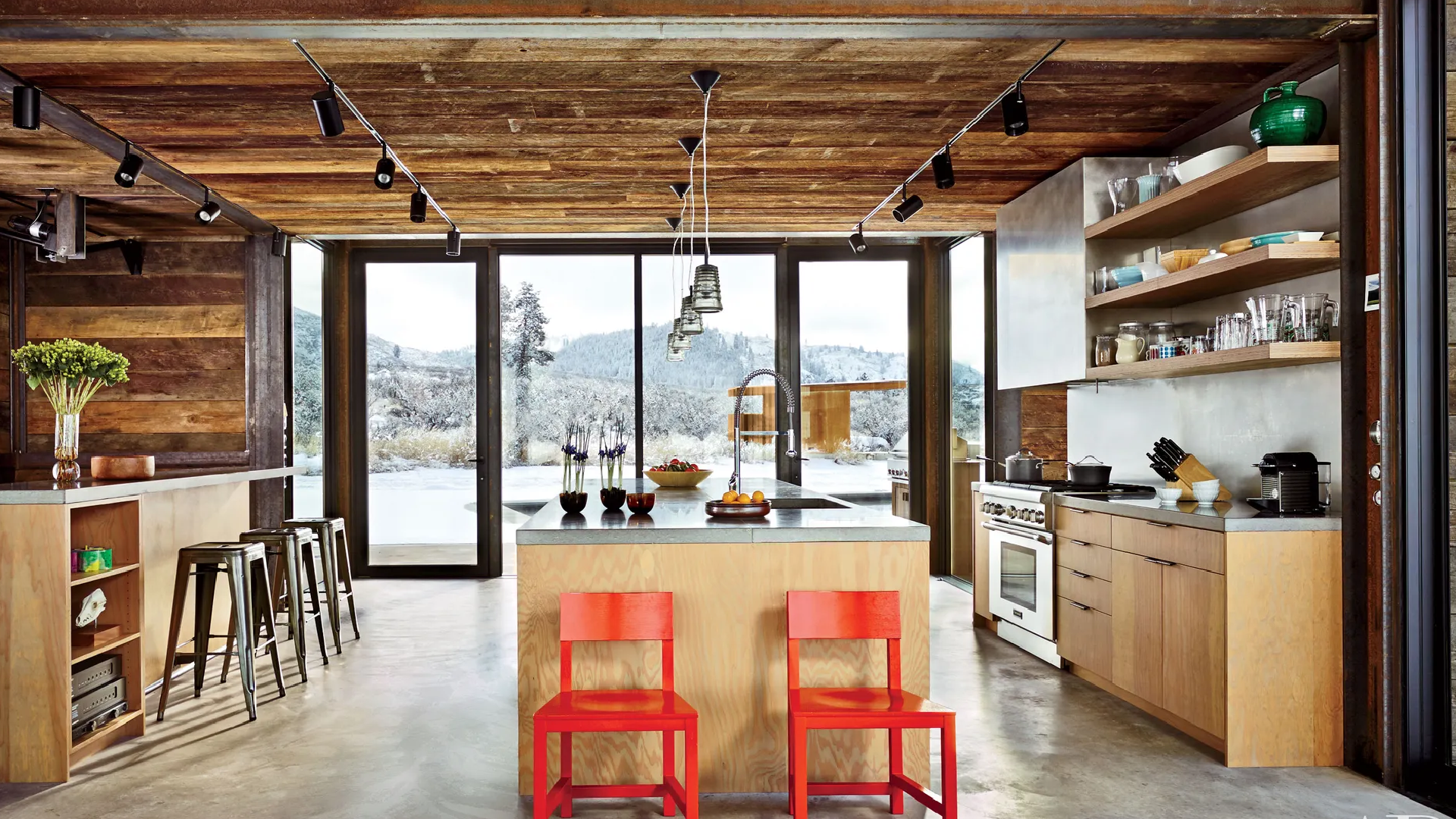
Photo courtesy of: ArchitecturalDigest
Next on our list of sustainable materials is reclaimed wood.
This material is often salvaged from old buildings, barns, warehouses, or other structures and is repurposed for new uses. Its rustic, weathered aesthetic makes it a popular choice for flooring, furniture, wall paneling, and other decorative interior elements.
Giving old wood a second life reduces waste in landfills, minimizes energy use compared to producing new materials, and avoids the environmental impact associated with deforestation and wood processing.
Embodied Energy Score: 9/10
Reclaimed wood has a very low embodied energy since it skips the energy-intensive processes involved in harvesting, milling, and transporting new timber. It only requires minimal energy for cleaning, refinishing, or cutting into usable pieces.
Local Material Score: 8/10
Reclaimed wood often comes from nearby deconstructed buildings or local salvage yards, giving it a high local material score in regions where it’s sourced. However, the score may drop if the wood needs to be transported over long distances.
Recycle Score: 9/10
Reclaimed wood is highly reusable and can often be repurposed multiple times in different applications. It can also be upcycled or used in new furniture and design projects, making it an excellent material for a circular economy. However, its physical condition (nails, warping, etc.) may limit certain uses, slightly reducing the recycle score.
Sustainable Material #5: Recycled Glass
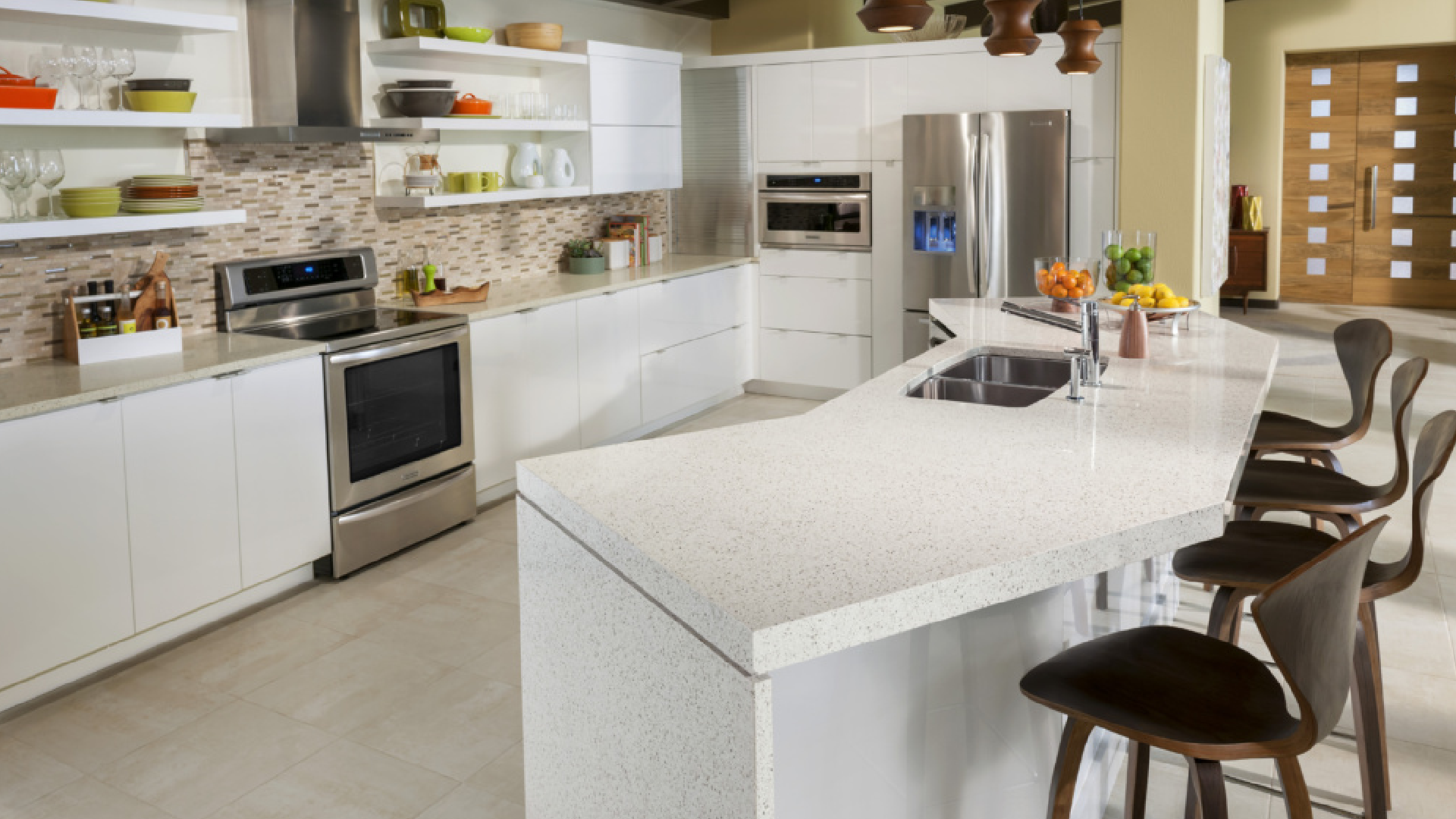
Photo courtesy of: GEOS Recycled Glass Surfaces
The final material on our list of the top five sustainable materials is recycled glass.
Most recycled glass is made from post-consumer glass (such as glass from bottles and windows) that is crushed, melted, and reformed into new products. Recycled glass is an excellent choice for countertops, tiles, backsplashes, decorative accents, and even lighting. It can be crafted into beautiful, colorful designs or used in translucent forms to add brightness and texture to spaces.
Manufacturers like GEOS Recycled Glass Surfaces use recycled glass to create beautiful countertop surfaces.
Recycled glass is often considered a sustainable material because it reduces the need for raw materials like sand and silica, conserving natural resources. The recycling process also uses less energy than producing new glass from virgin materials. By diverting waste from landfills, recycled glass helps reduce environmental pollution and supports circular economy principles.
Embodied Energy Score: 6/10
While recycling glass saves energy compared to producing new glass, the process still involves significant energy for melting and remanufacturing. Recycled glass has an embodied energy of about 15-20 MJ/kg, which is lower than new glass but still substantial compared to natural materials like wood or bamboo.
Local Material Score: 7/10
Recycled glass can be sourced locally from regional recycling centers, especially in urban areas where post-consumer glass is abundant. The local score is higher if a well-established glass recycling infrastructure is in place. However, in areas where glass needs to be transported long distances, the score can decrease.
Recycle Score: 10/10
Glass is one of the most recyclable materials, and recycled glass can be reprocessed almost endlessly without losing quality. It can be transformed into new glass products or used as aggregate in construction materials like tiles or countertops, giving it the highest recycle score.
Specifying sustainable materials for your projects can feel overwhelming, with many factors to consider. At Swatchbox, we believe that "sustainability is defined by how you use something." We hope this list helps guide you in the right direction as you move forward in selecting materials for your project.
Want to see more sustainable materials? See our list of 50 sustainable materials for architecture and construction.
 Swatchbox is a premier sample fulfillment service that connects design professionals with building product manufacturers. With proprietary software designed by insiders of the design community, Swatchbox helps manufacturers improve product sales and brand affinity by delivering material samples to the design community with speed, intelligence, and style. Learn more and join Swatchbox at www.swatchbox.com.
Swatchbox is a premier sample fulfillment service that connects design professionals with building product manufacturers. With proprietary software designed by insiders of the design community, Swatchbox helps manufacturers improve product sales and brand affinity by delivering material samples to the design community with speed, intelligence, and style. Learn more and join Swatchbox at www.swatchbox.com.



